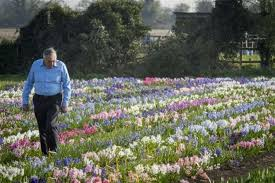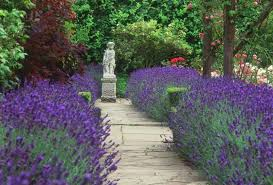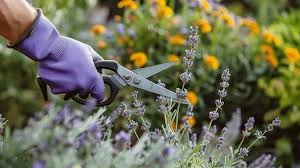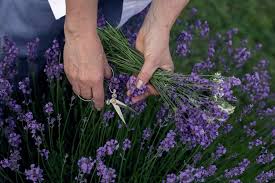Lavender is a beloved herb admired for its beauty, fragrance, and versatility in the garden. It’s not only visually appealing but also incredibly resilient, thriving even in challenging conditions. The English lavender, Lavandula angustifolia, is particularly hardy, flourishing in various climates, including my exposed Scottish garden.
Growing Conditions for Lavender
To grow lavender successfully, three key factors are essential: excellent drainage, poor-to-moderate soil, and plenty of sunlight. Lavender thrives in environments where many other plants would struggle.
Geraldene Holt, in Diary of a French Herb Garden, captures the essence of lavender’s preferred habitat: “Thin earth on limestone terrain supports scrubby flora. Lavender grows on steep, craggy slopes, developing small, intensely scented leaves while pushing its roots into rocky crevices.”
These conditions—sunny, dry, and well-drained—are what lavender craves. In my own garden, lavender grows along a south-facing wall with wind exposure and light, stony soil. It can tolerate a range of soil types, as long as it isn’t waterlogged, with moderately fertile, well-drained soil being ideal. Lavender even thrives in containers, making it a versatile addition to any space.

Ideal Locations for Lavender
Lavender makes an excellent hedge, particularly in windy locations. The compact variety Hidcote is well-suited for such purposes. In cottage gardens, planting lavender along pathways adds both visual appeal and an inviting scent. Lavender is also an excellent companion plant for roses, helping to conceal leggy stems during the winter months. Renowned gardener Gertrude Jekyll, creator of the Munstead variety, adored this combination.

For modern gardens, lavender’s subdued color and informal habit soften hard landscaping. Beyond the classic bluish-purple varieties, you can find lavender in white, such as Alba, and in pinks like Hidcote Pink and Loddon Pink, offering a range of options to suit various garden themes.
Growing and Caring for Lavender
Lavender can be grown from seed, though it requires patience since germination can take several months. A faster and more reliable method is propagating via cuttings, which guarantees a plant identical to the parent and faster growth.
In cooler climates, pruning is essential to keep lavender healthy. Begin by harvesting the flowers or cutting back faded blooms to maintain a tidy appearance. Over winter, leave the foliage intact to protect new growth from frost, then prune back in spring to prevent leggy, sparse growth. Avoid cutting into old wood, as it won’t regrow. In warmer climates, pruning is often done in autumn.

Lavender’s lifespan is relatively short, with plants typically requiring replacement every 5-10 years, even with careful maintenance. Pruning helps extend their life, but it’s also a great opportunity to experiment with new varieties. I recently replaced an aging lavender with Munstead, which is thriving despite a dry spell.
Harvesting and Using Lavender
Lavender is best known for its delightful fragrance. To harvest, cut the stems just before the flowers fully open. Gather the stems into bundles and hang them in a dry, sheltered spot. After a few weeks, the flowers will be fully dried, and you can shake them off into a container.
Store the dried flowers in a lidded jar, kept in a cool, dark place, or create sachets to freshen your linens and ward off moths. For those suffering from insomnia, a lavender sachet in your pillow can promote a peaceful night’s sleep.
While lavender is edible and occasionally used in recipes, it’s not commonly found in the kitchen. It appears in Herbes de Provence mixes, and a small amount of finely chopped lavender can enhance sauces or shortbread biscuits. If you have favorite lavender recipes, feel free to share them!
Lastly, lavender doesn’t require harvesting to be appreciated. Its beauty and fragrance are sufficient to attract pollinators, enhancing your garden’s overall health. Whether you harvest it or not, lavender remains a charming and beneficial addition to any garden.
